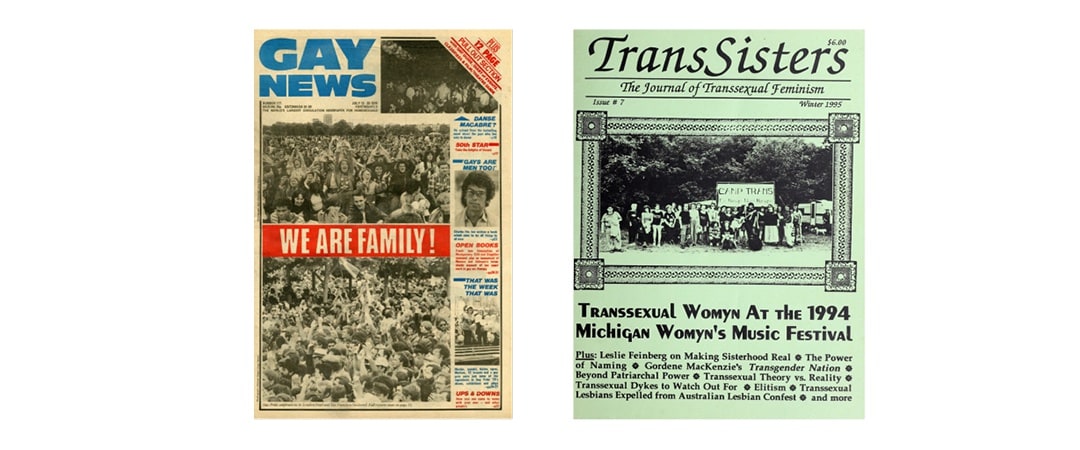-
“When my partner was submitted to a care home, a lesbian couple we met there warned us against telling staff we were gay” explained Ted Brown, an LGBTQ+ activist based in London. As a carer to a queer partner with dementia, Ted found he was dismissed by social care staff, excluded from treatment plans, and pressured to “go back into the closet” to avoid discrimination. When he discovered bruises on his partner Noel’s body, two whistle-blowers confirmed his suspicion: Noel had suffered physical abuse by staff. After Noel passed away, Ted launched a civil case against the local authority and a campaign against LGBTQ+ abuse in statutory care systems.
I met Ted while working on the Who is a Queer Carer? programme at Queercircle, which explores the experiences of LGBTQ+ people supporting loved ones with physical or mental impairments. As an anthropologist, I was eager to listen to carers like Ted, to hear their stories and map what ‘queer care’ means in different health settings.
-
 Ted Brown and his late partner Noel Glynn. Still from the documentary Ted & Noel (2021).
Ted Brown and his late partner Noel Glynn. Still from the documentary Ted & Noel (2021). -
Our first event was a panel talk and screening of Ted & Noel (2021), a documentary that follows Ted’s campaign against LGBTQ+ abuse in care systems. What struck me most was the audience. ACT UP shirts dotted the crowd, worn proudly by a group of HIV/AIDS activists. This was no surprise: Ted was an outspoken member of the Gay Liberation Front, and another panellist, Tony Collins-Moore, was an HIV/AIDS activist. But why did they show up to this event, specifically?
In many ways, LGBTQ+ support practices can be traced back to the HIV/AIDS epidemic. Abandoned by governments and medical institutions, HIV positive bodies were suspended in states of chronic injury. This reflects what queer theorist Jasbir Puar (2017) terms debility: a process in which the state “maims” certain bodies by coding them as socially disposable. Protest posters from the HIV/AIDS era reflect the belief that it was not the virus that killed LGBTQ+ populations, but rather the state’s refusal to fund adequate healthcare initiatives. In the panel talk, speakers highlighted the abuse of LGBTQ+ bodies through discriminatory health practices. As I listened, my body tensed. How will I maintain my own dignity and rights as I age? Who will protect my queer body? Perhaps the HIV/AIDS activists attended the event because they understood that campaigning is a form of community care, a way to safeguard against the state-sanctioned maiming of bodies.
-

Protest posters from ACT UP, New York (1986-1997). Source: The New York Public Library, Digital Collections. -
To counter this moral exclusion of care, we as LGBTQ+ communities have historically developed mutual aid practices. At the panel talk, we discussed the importance of care provision by chosen families. A term now widely adopted by queer circles, chosen family can be traced back to anthropologist Kath Weston (1991), who conducted fieldwork in San Francisco during the HIV/AIDS crisis. Weston noticed that when bio families abandoned HIV positive members, symbolic kinship groups emerged to take on caring roles. Addressing gaps in healthcare provision, these alternative families provided end of life support for partners, friends, and community members. Particularly among trans networks—many members of which are dislocated from their bio kin—chosen families have become invaluable support systems that counter exclusionary health practices.
However, when LGBTQ+ people enter medical and social care settings, these support systems are often undermined. At the event, Ted spoke of the heteronormative assumptions he encountered when his partner was submitted to a residential care home. “They either addressed me as Noel’s father or left me out of his treatment plans altogether.” He continued, “I’m black and he’s white, they all knew I wasn’t his father.” It has been shown that minority groups often feel unsafe in medical spaces, due to the chronic stress they encounter in everyday interactions (Power et al., 2022). For LGBTQ+ people, this may include having chosen family denied entry to appointments, being misgendered by staff, or receiving treatment plans that disregard one’s gender or sexuality. As in Ted’s case, feelings of mistrust and fear can also be compounded by experiences of racism, leading to intersecting forms of minority stress.
-

LGBTQ+ newspapers and journals have long alluded to our community’s family structures. Gay News, 1979. Source: Bishopsgate Institute. TransSisters, 1995. Source: Digital Transgender Archive. -
Notably, social support and activism have been found to combat the negative effects of these “minority stressors” (Power et al., 2022). In honour of his late partner, Ted began the campaign Not Going Into the Care Closet to raise awareness around LGBTQ+ abuse in care settings. Working with Compassion in Care, a charity that records cases of LGBTQ+ elder abuse, this advocacy network hopes to safeguard future generations against harm. There are many ways to action this. At the panel talk, Tony Collins-Moore, the Wellbeing Academy Manager at Tower Hamlets Carers Centre, argued that the inspection of care homes by the Care Quality Commission (CQC) must foreground LGBTQ+ and ethnic minority rights. Similarly, Sadiya Abjani, Director of Training and Instructional Design at SAGE, advocated for the enforcement of diversity training and credentials among social care providers. These solutions can work in hand-in-hand to provide fabrics of support for aging populations. They also act as forms of resistance to discriminatory practices targeted at queer and non-white bodies. To resist medical maiming, our community must do what it does best: stand as a family and fight together.
References
Power, R., Ussher, J. M., Perz, J., Allison, K. & Hawkey, A. J. (2022). "Surviving Discrimination by Pulling Together": LGBTQI Cancer Patient and Carer Experiences of Minority Stress and Social Support. Frontiers in Oncology, 12.
Puar, J. (2017). The Right to Maim: Debility, Capacity, Disability. Duke University
Weston, K. (1991). Families We Choose: Lesbians, Gays, Kinship. Columbia University Press.


